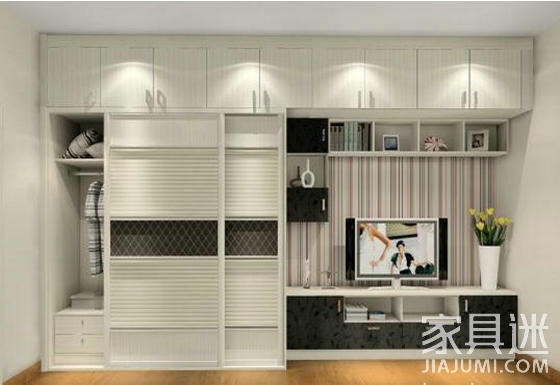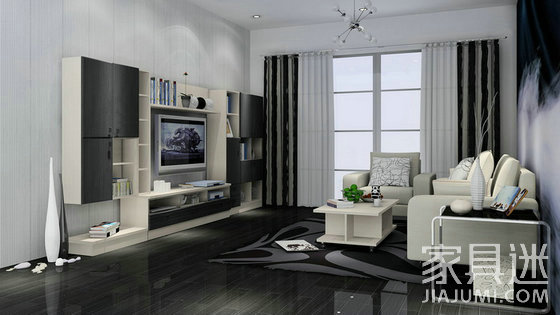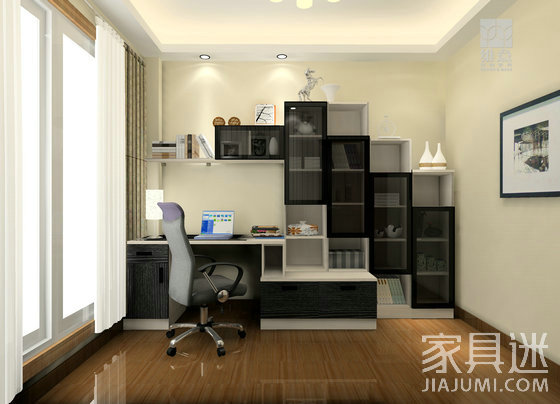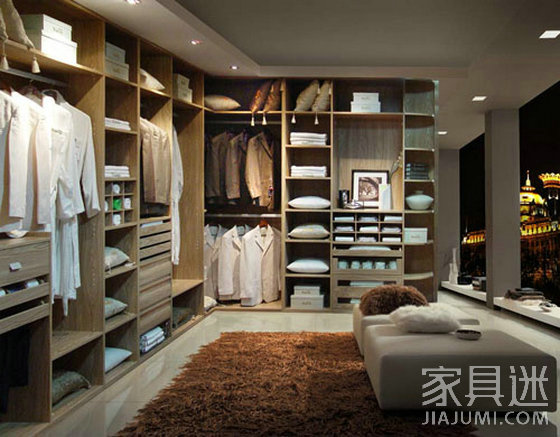Custom furniture is becoming more and more popular, but there are still many consumers who have some doubts about custom furniture. Now Xiaobian takes everyone to crack the 8 "suspended cases" that custom furniture is still to be solved.

1. Is the summer weather hot and will it increase the release of formaldehyde?
Some formaldehyde detection agencies in the market claim that summer is the most rampant season for formaldehyde evaporation. For every 1 °C rise in room temperature, formaldehyde volatilized at wooden furniture and flooring will increase the concentration of formaldehyde in indoor air by 0.15-0.37 times. Is this really the case? In the case of exacerbating the release of formaldehyde, is it more likely to exceed formaldehyde?
The release of formaldehyde is a slow process. Hot weather or transpiration does accelerate the rate of formaldehyde release. However, the introduction of environmental protection standards for plates has taken into account the factors in this regard. Therefore, as long as the products meet the corresponding environmental standards, even in the summer, there is generally no situation in which indoor formaldehyde exceeds the standard due to increased formaldehyde emission. Of course, considering that many aspects of the decoration may involve formaldehyde, it is better to keep the ventilation of the newly renovated house.

2. Does formaldehyde have a cumulative additive effect in a closed space?
A single plate does not exceed the standard, but if the whole floor is used in a large area, will formaldehyde have a cumulative effect, and eventually the formaldehyde content in the indoor air exceeds the standard?
At present, the formaldehyde standard of the custom industry does use the formaldehyde emission of a single plate as a standard. From the principle of formaldehyde release, formaldehyde itself is cumulatively superimposed in a confined space. In other words, the amount of formaldehyde released from a single sheet is not equal to the amount of formaldehyde in the air. However, the cumulative superposition effect of formaldehyde has been considered in the formulation of environmental standards for corresponding plates at home and abroad, and most people do not belong to confined spaces at home. Ventilation and air circulation will reduce the concentration of formaldehyde in the air. Therefore, as long as the home uses all products that meet the national environmental standards, there is no need to worry too much about the formaldehyde problem in space. Need to be especially reminded that formaldehyde will be released in the home space, in addition to the board, as well as paint, flooring and fabrics, so you can not simply use indoor air detection to point to a piece of furniture formaldehyde. To prevent formaldehyde from exceeding the standard in indoor air, it is necessary not only to select high-standard environmentally-friendly plates, but also to ensure that other products meet national environmental standards.
Further reading: Do you know the misunderstanding of buying custom furniture?
3. Is the sheet furniture really “short-lived†furniture?
Sheet furniture has not been so favored in China. The reason is that apart from the environmental protection of sheet furniture, it is more likely to cause problems. It is also related to the idea that sheet furniture is not as durable as solid wood furniture. Is this really the case?
How long can the sheet furniture last? In fact, it has a lot to do with the environment in which it is applied. Long-term wet environment does affect the service life of sheet furniture. However, if the environment is better, the life of sheet furniture can be very good. The reason why people will not produce durable plates is mainly because the early plate processing technology is not mature, and the plate market is not good, and the quality of inferior plate manufacturers is not guaranteed. However, in recent years, the state has made efforts to eliminate backward production capacity, and the technical upgrading of the sheet metal industry has brought the quality and service life of the board to a new level. Therefore, unless it is for the purpose of collection, there is no need to worry about the service life of the panel furniture.

4. The smell of the board is not equivalent to formaldehyde, but is the smell of the board itself harmful?
The newly installed wardrobe emits an odor. Although the custom merchants say that “the odor is the taste of the wood itselfâ€, “the smell does not mean that the formaldehyde exceeds the standardâ€, but is the odor itself harmful to the body?
Formaldehyde itself is only irritating and has no odor. Therefore, custom furniture emits an odor, which is not equal to formaldehyde. If you want to find out if the odor itself is harmful to the human body, you must first understand the source of the odor. Since the board itself is made from a variety of woods, it has a natural taste of different woods, and some woods are quite rich in flavor. Therefore, when different flavors are mixed together, it may smell uncomfortable and even unacceptable to some people. But from a health point of view, whether it is the taste of eucalyptus or the taste of pine trees, although it is not good, they are not harmful to the human body, even if they are mixed together.

5. Is the aldehyde-free board completely free of formaldehyde?
The high sensitivity to formaldehyde release has led to the development of a higher environmentally friendly aldehyde-free board. The so-called aldehyde-free board, really does not contain formaldehyde?
An aldehyde-free board, in a strict sense, should be called an aldehyde-free board. This aldehyde-free addition board does not mean that the board itself is completely free of formaldehyde, but means that no man-made glue is added during the processing of the board. Because the substrate of artificial board --- natural wood itself also contains trace amounts of formaldehyde (the difference in formaldehyde content of different woods), formaldehyde is not an absolute harmful substance, the body itself also contains trace amounts of formaldehyde. The adhesive used for ordinary plates is urea-formaldehyde resin glue. This glue itself is a combination of formaldehyde and urea, so it will contain formaldehyde. The higher the environmental protection grade, the lower the formaldehyde content in the glue used in manufacturing. The aldehyde-free addition plate is a formaldehyde-free MDI glue. Therefore, compared with ordinary wood-based panels, the environmental protection level of the aldehyde-free board is higher, and the formaldehyde emission is equivalent to that of the solid wood.
6. Is the sheet furniture environmentally friendly or is it more environmentally friendly?
Plates and solid wood, who is more environmentally friendly, seems to be an obvious answer, but is solid wood customization really more environmentally friendly than sheet customization? The answer may not be!
From the perspective of formaldehyde emission alone, the environmental protection index of solid wood is indeed higher than that of the board, but the premise is that the solid wood product should use environmentally friendly paint, such as water-based paint. Because the paint itself also contains harmful substances such as VOC and formaldehyde. From the concept of protecting the entire global environment, the board is much more environmentally friendly than solid wood. From the point of view of the effective use of wood resources, solid wood has higher requirements on the specifications and dimensions of raw materials, and the plate is not only required but can be used almost 100%, so the plate has higher utilization rate and lower than solid wood. The waste rate is more environmentally friendly. Relevant comparison data shows that a custom product that consumes 1 cubic sheet of material is required. If it is replaced by solid wood, it usually consumes 4 cubic meters of solid wood. In addition, solid wood has its advantages, high-grade, durable, but compared with sheet furniture, the drawbacks are also obvious, it is easy to deform, crack, its low carbon environmental protection and richness is not as good as sheet furniture. Therefore, foreign furniture materials are generally used in the form of plates, and they occupy an absolute large proportion.

7. In addition to aldehyde products, is there any effect?
People's talk about formaldehyde has given birth to a variety of products that claim to remove formaldehyde and formaldehyde. Are these products reliable?
At present, the products known as formaldehyde removal can be roughly divided into two types: one is a chemical reaction method, and the other is a physical adsorption method. The chemical reaction method, its effectiveness, how long it will last, and whether it has secondary pollution, there is no relevant experimental data support. As of now, this method can only eliminate formaldehyde on the surface of the board. Considering that the release of formaldehyde is a long-term process, its overall effect is very limited. The physical adsorption method is theoretically effective, but its adsorption range is limited, and according to the current detection method, it is difficult to judge whether the formaldehyde is decomposed or released again after being adsorbed. Therefore, for the time being, the choice of high environmental standards for household products, enhanced ventilation, and air purifiers are the best choices to prevent indoor formaldehyde from exceeding the standard.
8. Is the environmental standard for foreign plates higher than domestic?
We always take it for granted that foreign countries pay more attention to environmental protection, so the environmental standards of products must be higher than the domestic environmental standards. Is this really the case?
The environmental standards for plates vary from country to country. China's custom industry has high requirements for environmental protection standards for plates, and it has not only been in line with international standards, but even surpassed international standards. At present, the plates on the market can be roughly classified into E 0 grade, E 1 grade and E 2 grade according to the amount of formaldehyde released. The E 0 grade is the current highest environmental protection grade standard. Around 2014, the mainstream brands in the domestic custom home industry have begun to fully adopt the upgraded E 0 grade plates. (Editor's Note: Non-national standards, industry habits will release formaldehyde emission not exceeding 0.5 mg/L as E 0 grade ), and in the trend of environmental protection, more and more custom brands have followed suit; in addition, some brands have also launched a formaldehyde-free aldehyde-free board and ecological board. Driven by the mainstream brands in the custom industry, the entire industry is moving towards the environmental standards of Super E 0.
Shenzhen Nanfang Shishang Cosmetic Utensil Co., Ltd. , https://www.nfbrush.com